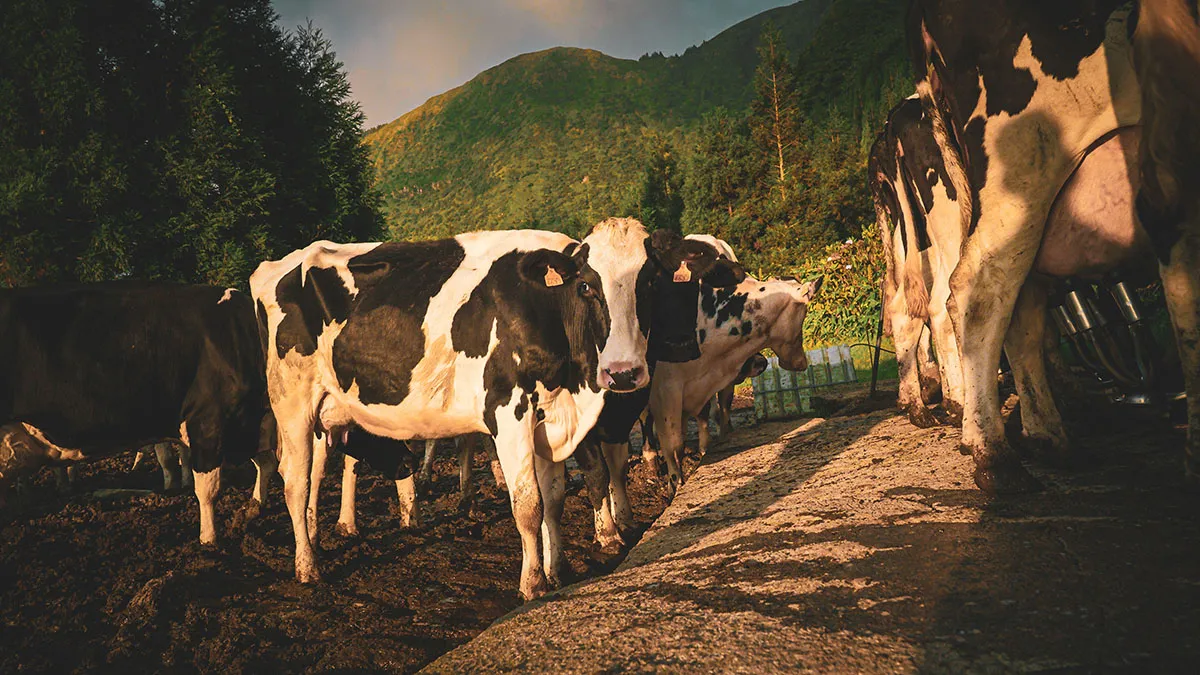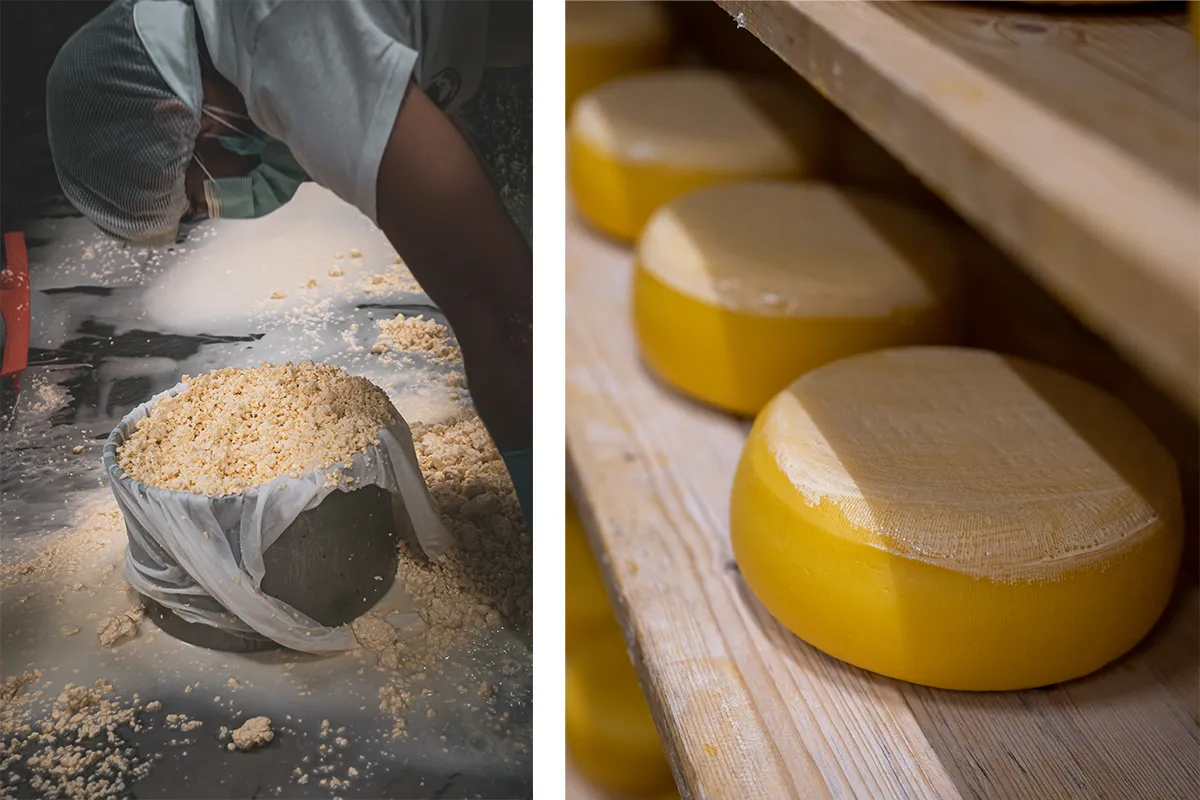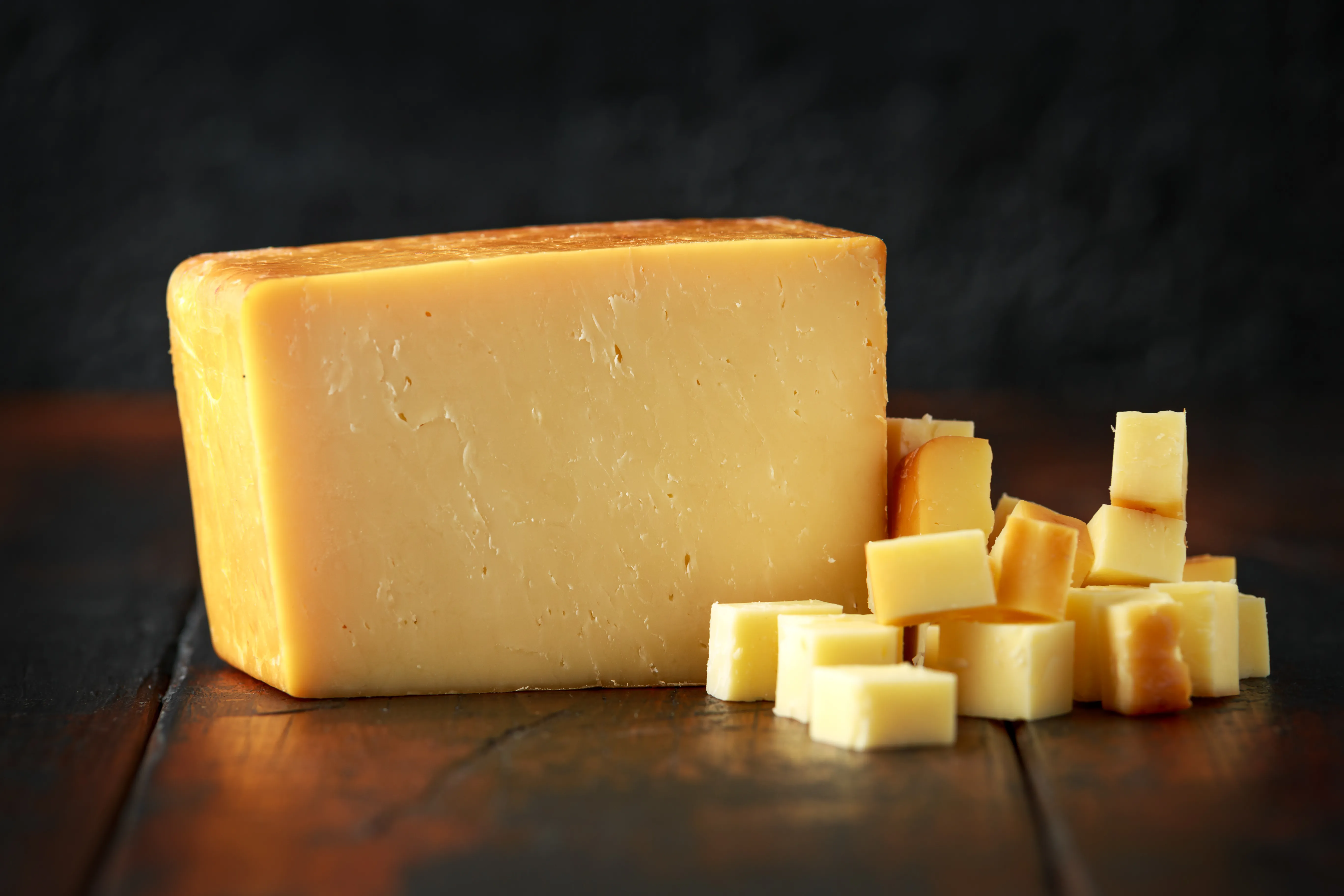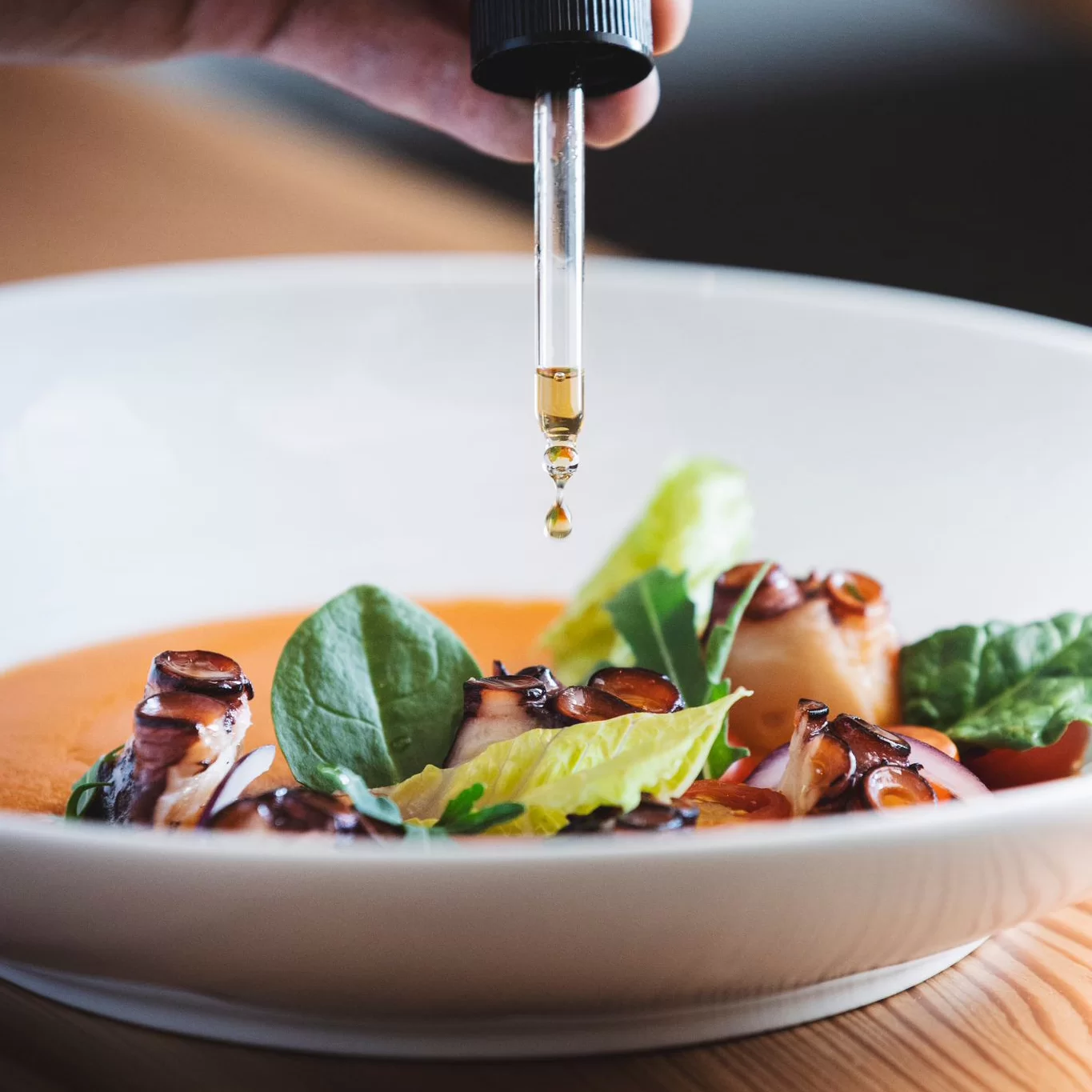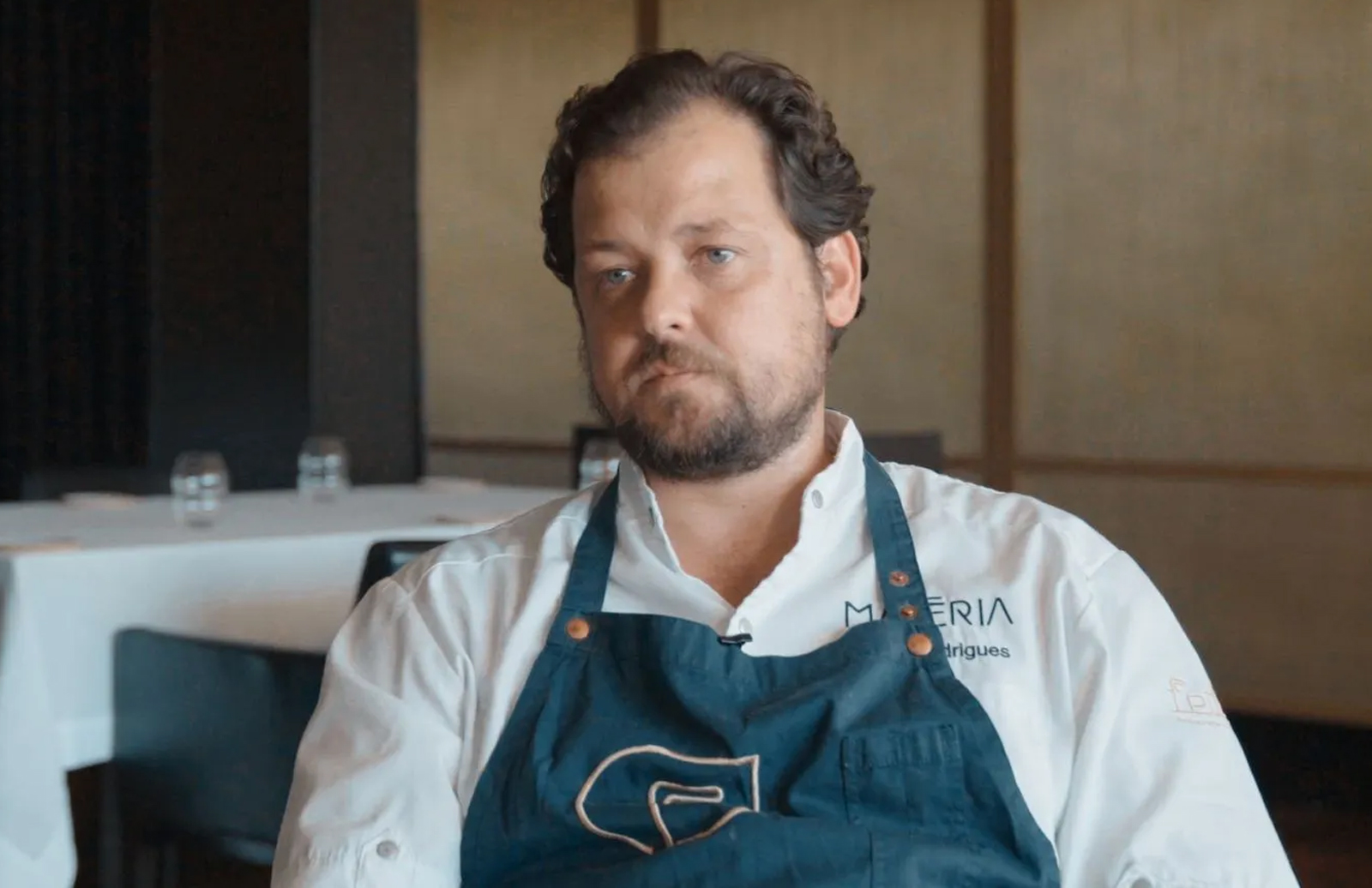Portugal is home to more than a dozen officially recognized regional cheeses, many with DOP protection (Denominação de Origem Protegida) — safeguarding their origin, identity, and traditional methods. These aren’t industrial products; they are small-batch, seasonal, and shaped as much by place and weather as by recipe.
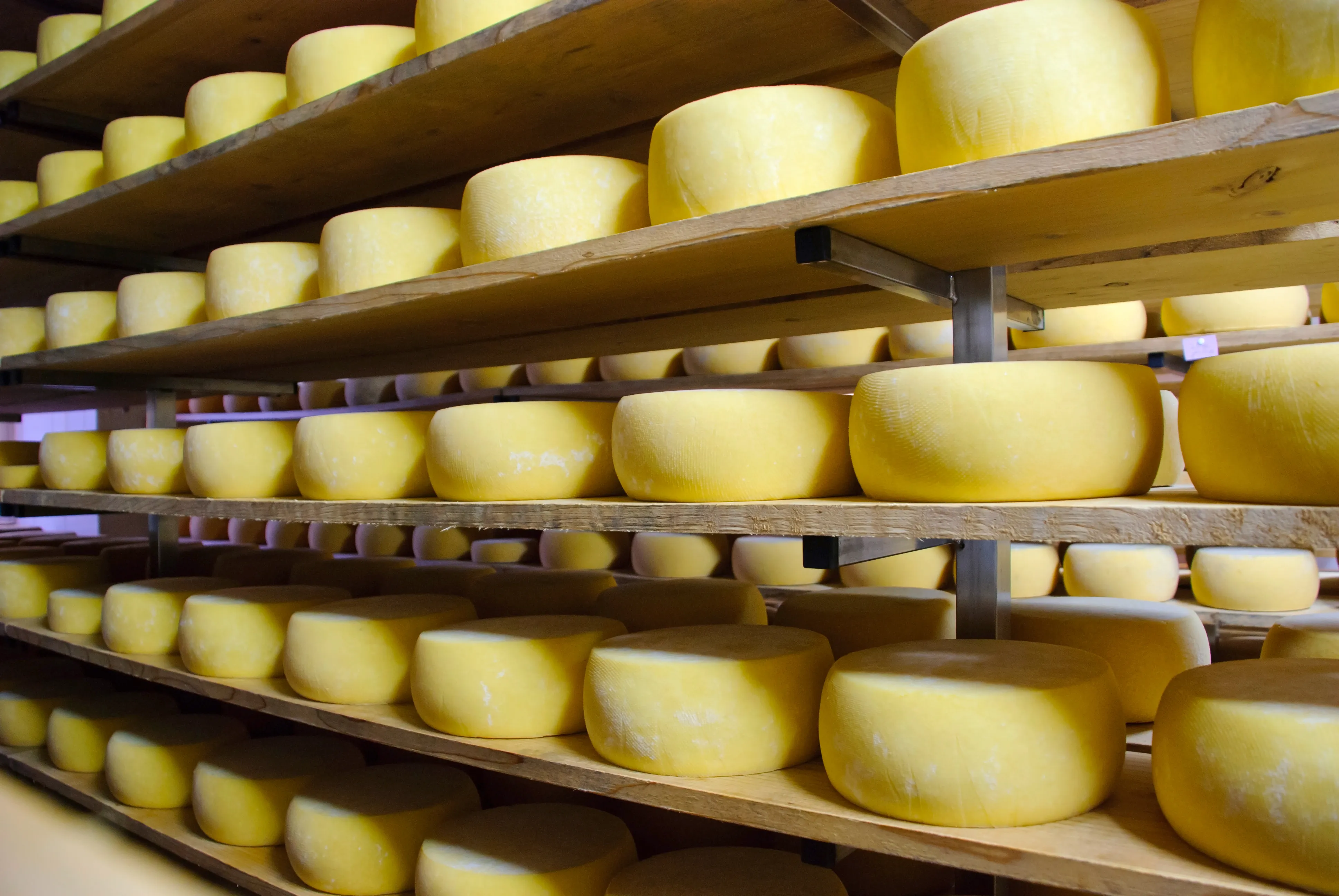
Crafted by Tradition
Most Portuguese cheeses are made with raw milk and age-old techniques: thickened with thistle instead of animal rennet, turned and salted by hand, and matured slowly in cool cellars.
Each wheel carries the character of its land:
São Miguel (Azores) – Aged on volcanic pastures where cows graze salty grasses, yielding a sharp, buttery cheese.
Serra da Estrela (Beiras) – Spoon-soft and earthy, made from sheep’s milk and thistle rennet.
Nisa (Alentejo) – Buttery, mellow, and delicately aromatic.
Rabaçal (Beiras) – Rustic and sharp, with a bold edge shaped by wild herbs.
Each cheese is more than flavor—it’s a reflection of Portugal’s landscape and memory.
A Taste of Place
Cheese in Portugal is tied to its environment: the altitude of mountain pastures, the scent of wild herbs, the steady cool of stone cellars.
You’ll find them everywhere—village markets, countryside inns, Lisbon’s restaurants. Served at the start of a meal or its end, paired with fig jam, pumpkin preserves, fresh bread, or wine. Some are eaten with a spoon; others cut with a knife. No two wheels are ever the same—and that’s the beauty of it.
Portugal Among the World’s Best
This deep cheesemaking tradition has placed Portugal among the world’s great producers. Once tasted, these cheeses are unforgettable.
If you’re in the U.S., you don’t have to cross the ocean to experience it. Explore our curated selection of Portuguese cheeses at WorldClass.com and bring a taste of Portugal home.

